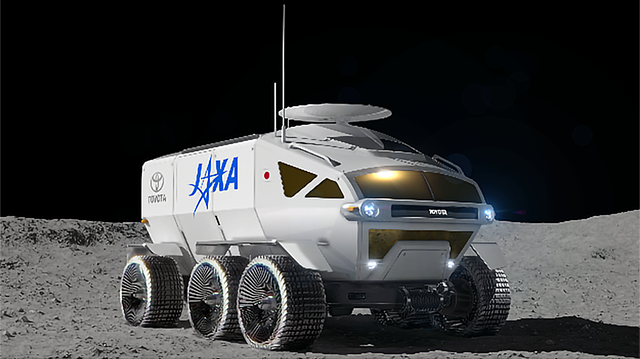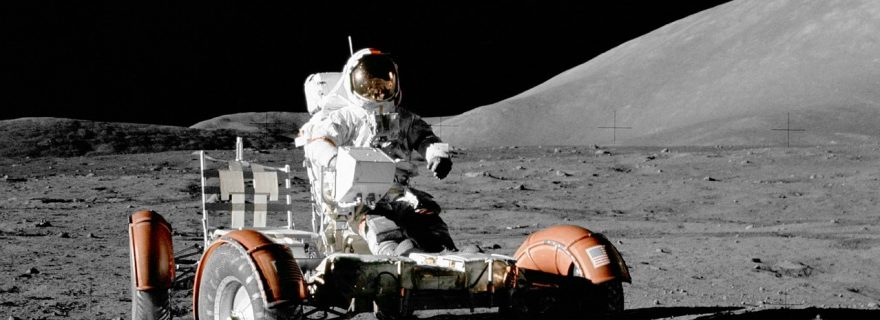JAXA, Japan’s Aerospace Exploration Agency, announced March 12, 2019, that it has teamed up with car producer Toyota to build the definitive, off-road, lunar rover to convey astronauts on the moon. The vehicle could be ready for launch by 2029.
Feature Full and Futuristic
Eco-friendly fuel cells will power the massive futuristic vehicle which can have an enormous total cruising range of 10,000 km (6,213 miles). JAXA President, Hiroshi Yamakawa, said in a statement that “manned rovers with pressurized cabins are an element that will play an important role in full-fledged exploration and use of the lunar surface.”
He added that through their joint studies, JAXA wants to tap Toyota’s technological skills regarding mobility and use them to advance their studies to achieve a manned, pressurized rover.
According to JAXA officials, the plan is to create a rover that will be typically manned by two astronauts; however, it will be able to accommodate a crew of up to four in case of an emergency.
This capacity means that the JAXA-Toyota rover will have to be at least 6 meters (20 feet) long, 5.2 meters (17 ft.) wide, 3.8 meters (12.4 ft.) high, and have six wheels. The vehicle will also have around 13 square meters (140 square feet) of living space.
Concept design images of the rover show a sleek, space-age lunar car with a cockpit shaped like a nose enclosed with angular windows. The rover has both headlights, running lights and brake lights. It appears to use a rollout solar array for electric power generation.
Moon Travel Challenges
JAXA and Toyota have been working on building the rugged sports utility vehicle since May 2018. The project does come with its challenges though. JAXA VP, astronaut Koichi Wakata, explained that the gravity on the moon is a sixth of Earth’s gravity.
In the meantime, the moon comprises tricky terrain with cliffs, hills, and craters. Furthermore, there are temperature conditions and radiation that is far tougher than conditions on Earth, not to mention the extremely high vacuum atmosphere.
Toyota – Focus on Safety
Toyota expressed the company’s excitement to partake in this lunar project to develop the rover by annexing its car-making skills and technologies associated with automated driving as well as electrified vehicles, like fuel cell batteries.
Toyota President, Akio Toyoda, emphasized that the safety of the vehicle will be critical for astronauts and cars in general play an active role in making sure that people in all of Earth’s regions come back alive and that is the crux of this project.
Team Japan
Wakata said in the statement that the challenge of international space discovery is to overcome the unknown. Taking on this challenge, he said, involves gathering the country’s tech capabilities and engaging as “Team Japan.” By collaborating with Toyota as a starting point will help grow the resources of “Team Japan” in the continuous pursuit of global space exploration.

Sustainability and Clean Power
The importance of using fuel cells is that they utilize clean methods to generate power, only emit water, and, owing to their excellent energy concentration, can deliver a prodigious amount of energy and hence are perfect for this project.
Toyota Executive VP Shigeki Terashi stated that the company believes that attaining a sustainable society of movement on Earth comprises the concurrence and prevalent use of electrified vehicles, like hybrid vehicles, fuel cell vehicles, electric cars, and plug-in hybrid vehicles.
Fuel cell batteries are an essential technology in electrification. He explained that fuel cell vehicles could discharge fewer amounts of destructive substances that exist in the air which they absorb.
They have ‘minus emissions,’ and Toyota even wants to improve on that. Furthermore, he said that unless electrified vehicle use goes mainstream, there can be no contribution to the Earth’s environment. Toyota aims to go beyond manufacturing complete vehicles to deliver electrification to customers in several methods, like through technologies and systems.




